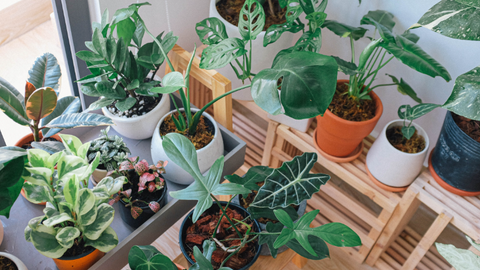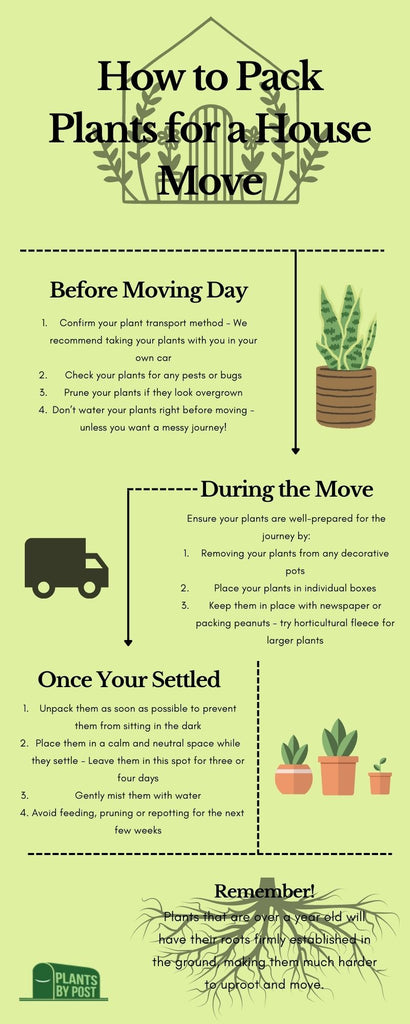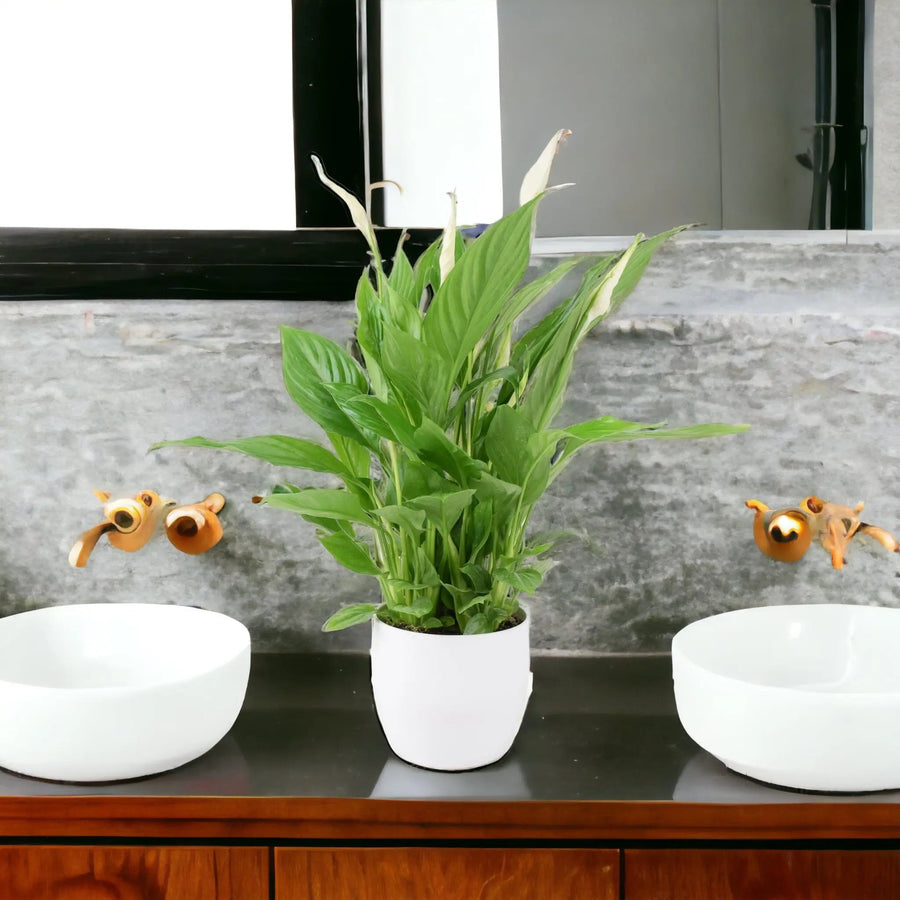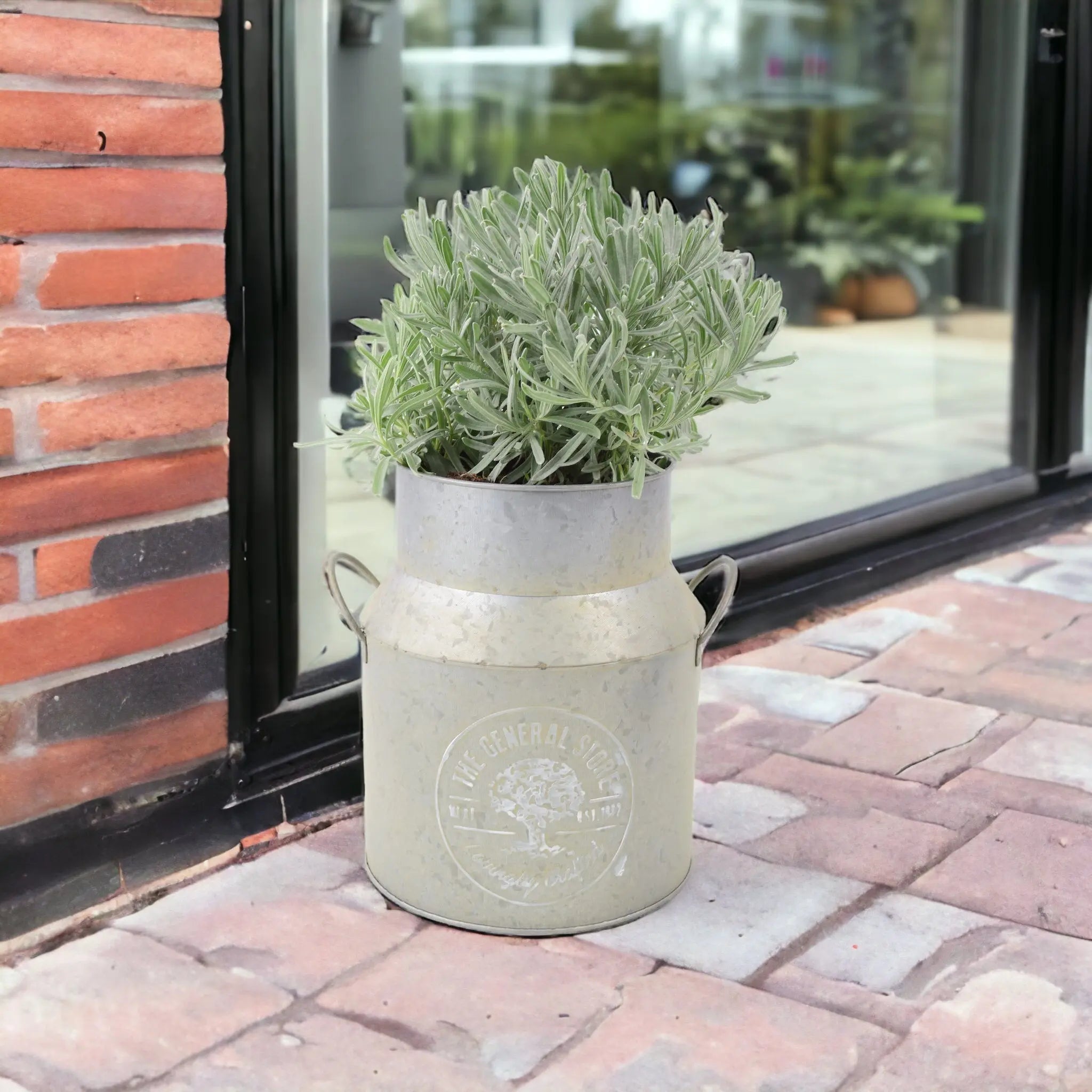Moving House With Plants | A Guide From Plants By Post

Moving House With Plants Guide
When moving house with plants in tow, any plant parent understands how much care and attention our plants need. They’re almost as needy as real children! That and our bond with our plants is even more apparent when it comes to moving house with plants. Of course, it is a hectic and stressful process, and our plants hate it even more than we do.
But it must be done if you want to bring them to your new home. To make the whole experience as stress-free as possible for you and your plants, we have compiled an extensive guide on moving house with plants. We have covered all the hints, tips and tricks to make moving with plants as simple as possible and answered some frequently asked questions you might be wondering.
Can You Take Plants When Moving House?
Moving house with your plants is tricky but possible. It’s just going to take some care and patience to ensure they survive the process and journey, as plants are delicate. They also hate change.
But before you put your plants through the big move, it’s important to understand what you can take with you. Indoor potted plants are much simpler to move, but garden plants can be more difficult. Anything that has been planted for only a year or two in the soil should be safe to move. This is because their root systems won’t yet be too large or extensive, and if you do lose some in the process, it won’t be detrimental to the plant’s health. Any long-standing plants will have buried their roots too deep, and to try and remove them will be a death sentence for your thriving plants, so it is best to say your goodbyes and part ways.
How to Pack Plants for Moving in 3 Steps
Once you have decided what will be safe for travel, it’s time to prepare for the big move! You can successfully move house with your plants if you follow advice for every step of the moving journey.

1. Before Moving Day
You will need to go over several considerations before the big moving day. Firstly, you will need to confirm the transport for your plants. For example, if you have hired moving vans, you will need to speak to the company first and find out their policy on transporting plant life. Because of their notoriously delicate nature, many moving companies prefer not to transport plants to avoid blame for damaged goods. We recommend taking your plants with you in your own car so that you can keep a careful eye on them.
You should also check your plants for any pests or bugs, especially before putting them in close proximity during the journey. If there are some undetected creepy crawlies, you risk spreading these from one plant to another and inside your new home once you arrive. Take this time to prune your plants if they look overgrown. This minimises the risk of losing plant limbs during the journey as they are more compact.
Finally, don’t water your plants right before moving! This excess water can make the journey incredibly messy and much harder for you as your plant pots will carry the excess water weight.
2. During the Move
When moving day comes, you want to ensure your plants are well-prepared for the journey. This means you need to learn how to pack plants when moving. Start by removing your plants from any decorative pots, if possible. By doing this, you can cut down on the weight by transporting your plants in plastic nursery pots, and it also minimises the risk of damage to your decorative pots.
Next, place your plants in individual boxes where possible. You can keep them in place with newspaper or packing peanuts, being careful not to squash the leaves and limbs. For particularly large plants that won’t fit inside a box, try horticultural fleece to keep your plants padded and protected throughout the journey.
3. Once You’re Settled
When you arrive at your new home, it can be tempting to put off unpacking until you have rested and settled in. But when it comes to your plants, you must unpack them as soon as possible to prevent them from sitting in the dark. You should also place them in a calm and neutral space while they settle after travel, even if this isn’t going to be their new spot.
Leave them in this spot for three or four days and avoid giving them too much water. A good mist will be more gentle for them rather than being soaked with water. For the following couple of weeks, you should also avoid feeding, pruning or repotting your plants as this can be too traumatic for them after their upheaval and send them into growing mode when they should still be adjusting.
Do Plants Get Stressed When Moving?
As we have mentioned, plants find being moved very stressful, which can lead to a continuous decline. Here are a few signs that your plants are experiencing stress that you should look out for:
- Wilting
- Dried Leaves
- Yellow Lower Leaves
- Leaf Loss
- Stunted Growth
If you notice any of these symptoms with your plants, you can seek further advice from our Dr Green Finger’s guide for indoor plants. As well as shop for a range of plant care supplies available.
Taking Care of Your Plants
We hope by now you feel more prepared ahead of your moving date. Remember, no matter how far the distance, whether you’re moving up the road or to the other end of the country, you can ensure your plants survive the journey with the help of our tips and advice.
Suppose you have recently moved house and want to fill your new space with greenery or are looking for the perfect housewarming gift. In that case, you can shop our popular collection of indoor plants and outdoor plants. We also have a range of decorative plant pots that will help make your new house feel like a home.
Related
Biophilic Design: What Is It And How Do You Make It Work In Your Home?



